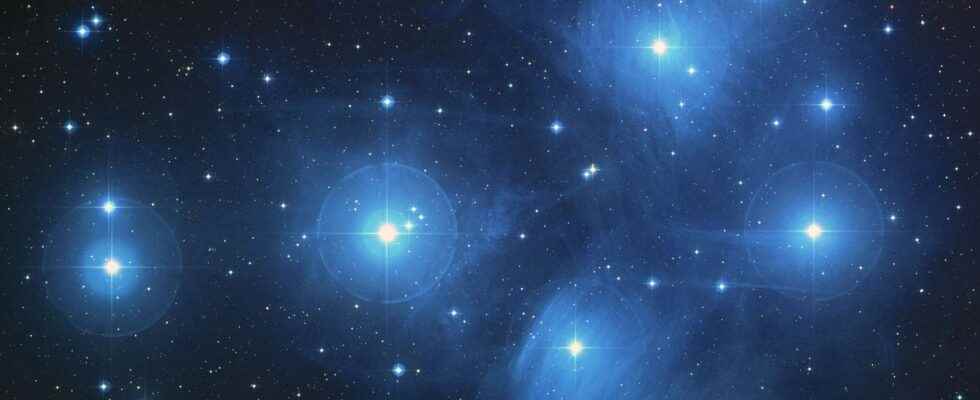The prehistoric peoples of northern Europe have long been called “barbarians”, basing their societies on a purely oral tradition. However, we now know that our ancestors had a relatively advanced knowledge of astronomical configurations. The Nebra Disc, dating from the Bronze Age and considered the oldest known sky chart, is proof of this.
You will also be interested
[EN VIDÉO] The enigma of the Stonehenge solstices Traditionally, thousands of people gather at the Stonehenge site (Great Britain) to celebrate the start of summer. But the summer solstice 2020 will not be quite like the others. If the Earth has not stopped spinning, the coronavirus crisis is still there. This year, for health reasons, the site will remain closed to the public.
It is likely that our ancestors, from prehistoric times, observed the sky and that the dance of stars as well as phases of the moon had to punctuate their lives. Discovered in Germany in 1999, a bronze disc dating from 1600 BC testifies to a rudimentary astronomical knowledge and the central role that the movement stars in the organization of ancient societies. Nebra’s disc would thus represent the first chart of the sky.
A 3,600-year-old sky map
Thirty centimeters in diameter and two kilos, these are the measurements of the bronze object found in Nebra-sur-Unstrut (Germany). The disc is encrusted with gold plates of different sizes that scientists assume to be representations of the stars: 32 small dots representing stars, Full moon and crescent moon. Two arcs of a circle are also represented: one striated and the other describing an arc of 82 °. Opposite the latter, in a perfectly symmetrical manner, we can guess the trace of a similar arc which has now disappeared.
The object is so surprising that researchers have long considered it to be a fake. But the various analyzes and isotopic dating carried out attest that the Nebra disk would have been shaped. in the bronze age, 1,600 years before our era.
If the circular shape, the golden dots and the crescent immediately make one think of a celestial map, scientists go much further. The organization of seven small dots is indeed similar to that found on certain Hittite bas-reliefs in Turkey, and could represent the constellation Pleiades. Scientists are however debating the interpretation to be given to the two arcs of a circle positioned on the edge of the disc. The striated arch could represent a celestial boat, a symbol commonly found in Egyptian mythology, making it possible to ensure the transport of the Sun from west to east at night, so that he could get up in the morning. Other scientists believe it could be the Milky Way.
Astronomical information to organize work in the fields
The collaboration between historians and astronomers allowed to deduce that this map represented the celestial vault seen from a very particular place and at a precise time of the year. By positioning the disc in the same place where it was found, horizontally, the researchers have indeed discovered that it delivers certain viewing angles giving landmarks on the horizon. And not just any: the ends of the two arcs of 82 °, on either side of the disc, indicate the points where the sun rises and sets at the time winter and summer solstices. The position of Pleiades with respect to the Full Moon and the crescent would also indicate other relatively precise dates, this astronomical configuration being repeated only twice a year: in March and in fall.
However, these two periods of the year represent important moments for work in the fields, respectively the start of sowing and the last harvests. At VIIIe century BC, Hesiod also explained that ” when the Pleiades, heavenly daughters of Atlas, appear on the horizon, begin to reap and when they begin to disappear, plow »(The works and the days, vers. 383-388). Scientists therefore believe that Nebra’s disk would have served as an agricultural calendar.
A relatively advanced astronomical knowledge for the time
By using particular astronomical configurations for a very precise place, the Men of the Bronze Age would thus have perpetuated a knowledge of the different seasons in order to ensure harvests from year to year. But several other details suggest that the astronomical knowledge of our ancestors may well be more important than previously thought. Indeed, according to the hypothesis of the astronomer Rahlf Hansen, the disc would also make it possible to solve the problem of the shift between a lunar year (354 days) and a solar year (365 days), well known to societies using a calendar based on the moon.
Because it should be noted that the width of the crescent Moon compared to the diameter of the entire disc suggests that the Moon is here represented at 4e day after the new moon. This information concord disturbingly with a Babylonian text, 1,000 years younger, which explains that in the spring, when the Pleiades and the Moon meet, four days after the new Moon, the lunar calendar must be implemented by one month. Crucial information available on the disc which would have enabled Bronze Age astronomers to adjust the lunar and solar calendars so as not to make mistakes in the important dates of agricultural work.
The Nebra disc therefore testifies to the extent of the astronomical knowledge of the prehistoric peoples present in northern Europe. It is now kept at the Regional Museum of Prehistory in Halle-sur-Saale, Germany.
Interested in what you just read?
.
fs3
